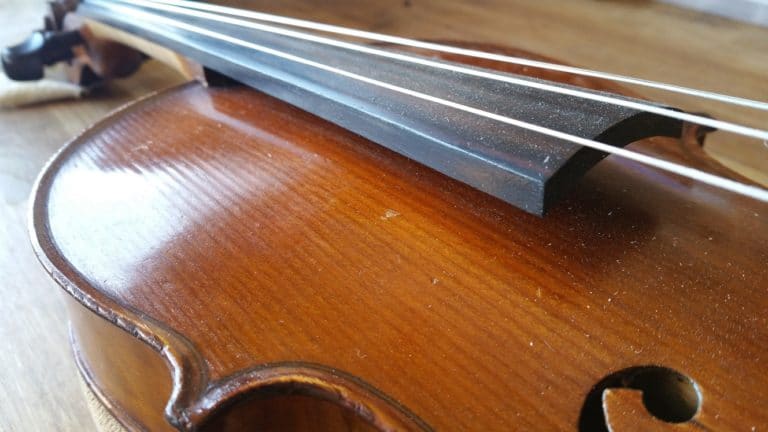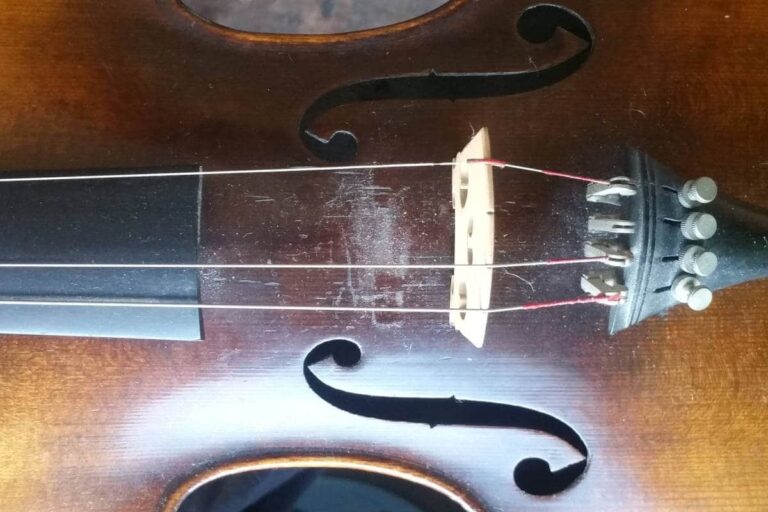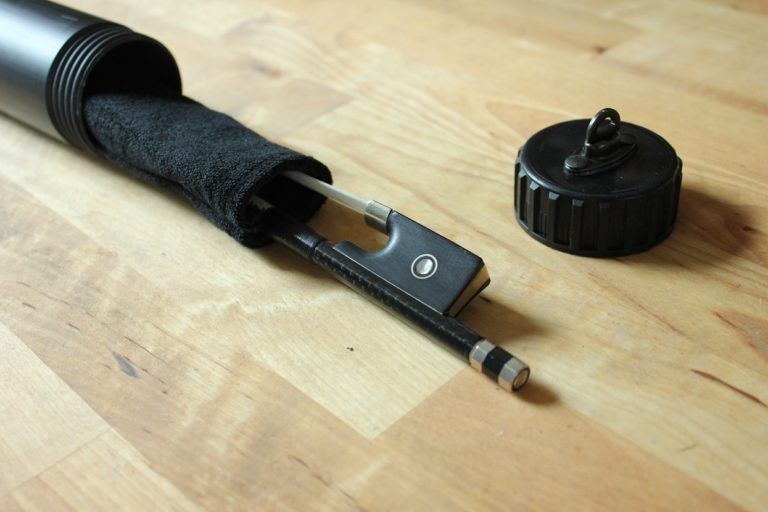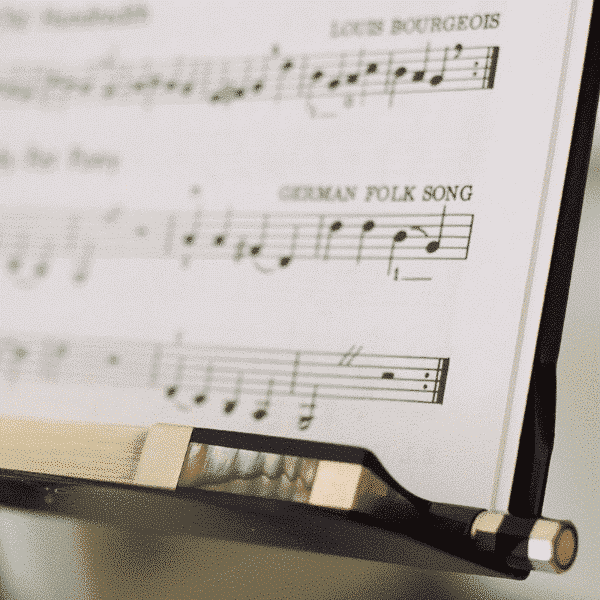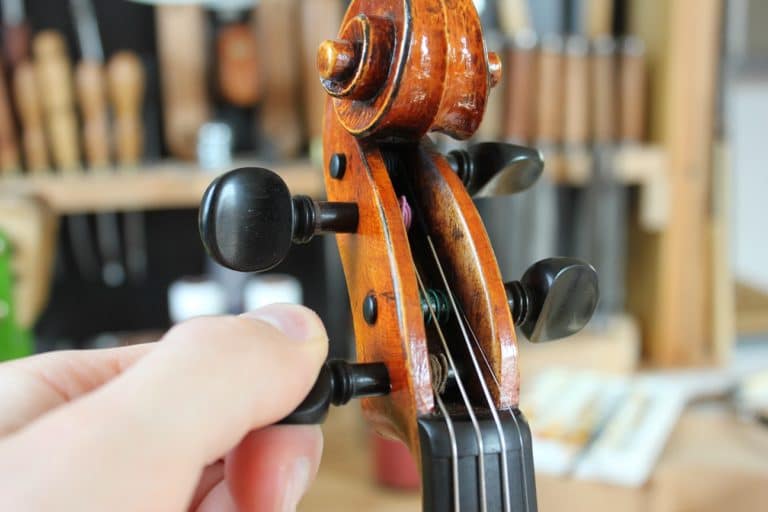Rosin is often regarded as a mere obligation for bow users. Yet it is an essential component in the creation of the sound of bowed string instruments, and its choice is not insignificant. Let's find out why in this article.
How is rosin made?
Rosin is one of the solid residues produced by the distillation of turpentine from the resin of various pine species. At room temperature, it is solid and brittle: in fact, it only begins to soften between 90 and 100°C. It comes in a variety of colors, from almost transparent light yellow to opaque black(depending on how it has been distilled or the additives it contains). It has many applications in different fields: as an adhesive or waterproofing agent, in sports or industry.
Finally, it's an indispensable component for bowed stringed instruments: applied evenly to the wick of a bow, rosin dust provides enough grip to allow the string to vibrate continuously. Without this roughness, the horsehair will simply slide over the strings, creating very little sound.
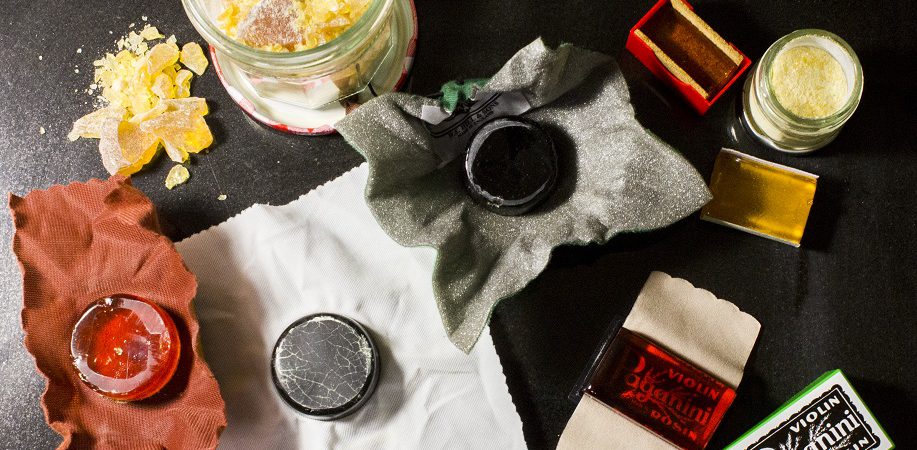
Violin rosin and bowing
Modern rosin blocks come in many varieties of shape, color and packaging. They generally cost between 4 and 30 euros. Price differences are rather difficult to explain, but let's just say that elegant packaging and ingredients with mysterious properties(gold flakes) are arguments in their favor.
When using the block for the first time, it can be rubbed with sandpaper to encourage application to the wick. The wick should be evenly coated along its entire length to ensure a constant sound. There's no need to use too much, as this will only clog up your instrument and bow. Also, the frequency with which the wick is reapplied will depend only on the desired adhesion and on the wick itself:
- A brand-new wick will require more effort before it can be used, and you'll have to insist more on the application.
- An old wick that no longer catches without a constant supply of rosin is too clogged and needs to be replaced.
In the absence of studies or verifiable data, the lifespan of rosin remains a relatively imprecise parameter. However, there is evidence that its main components evaporate or oxidize over time. And even if this process is slow, the quality of the product tends to deteriorate. Some manufacturers advertise a one-year shelf-life to guarantee optimal results with their product. Probably also with the aim of selling more.
How do you protect your bow from rosin?
[blog_posts items="1″ orderby="date " ids="2444″]
Choosing rosin for your violin
There is a wide variety of rosin choices for bowed instruments. It's not very complicated, but it will certainly take a lot of trial and error to find the ideal rosin. Generally speaking, the stickier the rosin, the more grip it will offer on the strings, and therefore power and control to the sound. Until it becomes too sticky and interferes with string vibration. Here are a few rules to help you choose your rosin:
- Depending on the instrument and the diameter of the strings used
- violinists(or violists) use a drier or harder one
- cellists use one of medium hardness
- double bassists prefer a softer one
- Depending on the type of rope used
- steel strings are easier to play with rather hard rosin,
- synthetic and gut strings require softer rosin.
- In temperate or cold climates, or for studio recording, a softer rosin is often preferred.
- Tropical climates and concert halls generally require a harder rosin.
In principle, dark rosins are stickier and have a better grip. Unlike lighter rosins, which are much more widespread. Nowadays, however, with the various additives used by manufacturers, color no longer offers any real indication.
The use of different rosins throughout the year may be a solution for the most demanding musicians. But in this case, we strongly advise against applying all rosins to the same bow. Indeed, you can no longer really control the effects of different types of rosin mixed on the same wick. In this case, having several bows and a certain amount of organization can be very useful.
A few warnings about rosin
Relatively acidic, dust deposits also have harmful effects on your instrument's varnish and strings. Don't hesitate to clean them when you stop playing to preserve them. For more details and advice on this subject, read the following article: Preserving your violin.

